In this video, we speak to three Caravan Guard customers for their top tips on towing a caravan.
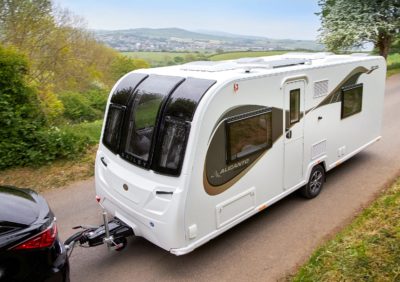
From driving licences, tyres and towing abroad, we bring you some great things to consider when towing a caravan, whether you’re new to caravanning or have been doing it for years.
Let’s meet the caravan towing tipsters…
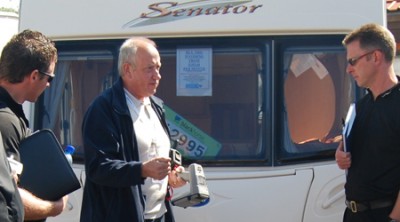
Tim Booth is the Leisure Vehicles’ Officer for the National Vehicle Crime Intelligence Service and not only advises the industry on all things towing, but is also involved in the recovery of stolen caravans and carrying out roadside checks. He’s also a keen caravanner and has been towing a caravan for an incredible 40 years.
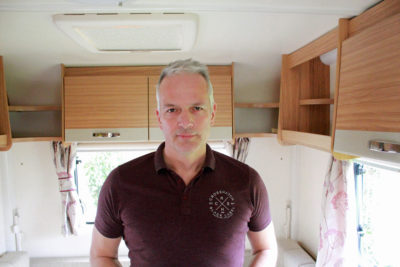
Lee Davey is the brand ambassador for Bailey of Bristol and has been towing a caravan with his family across Europe and in the UK for 12 years. With Bailey, he’s also towed a caravan to the Arctic Circle, to the end of the world and from Bristol to Istanbul in a 5,000-mile intercontinental journey through 21 countries in 21 days.
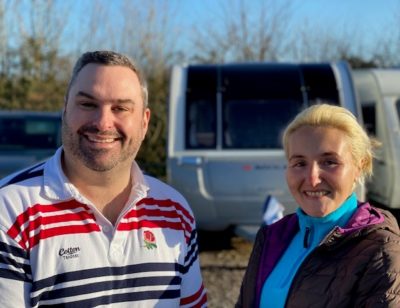
Jules and Karina Ingham from Here We Tow have towed an eight-foot-wide Adria caravan and in the two years they were towing they covered 15,000 miles in the UK and in Europe.
Ten top caravan towing tips
1. Check your driving licence
Make sure you’ve got the right entitlement on your driving licence for the car and caravan outfit that you’re towing.
Tim said a lot of people with a category B driving licence think they can’t tow anything.
“But you can, up to a car and caravan combination of 3,500kg,” said Tim.
In 2021, it was agreed that car drivers could tow a heavier caravan outfit without having to take the B+E test. Drivers who passed their car test after January 1st, 1997 can tow a laden caravan weighing up to 3,500kg.
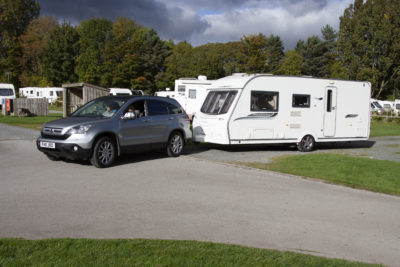
Drivers who have held a licence since before 1997, will already have B+E on their licence and can legally tow over 3,500 kg – unless they’ve had their licence revoked.
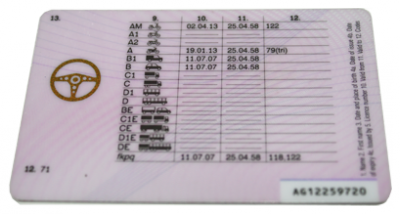
“Check the back of your driving licence and it will tell you the driving groups you’re entitled to and more importantly that you’re insured,” added Tim.
2. Make sure you have the correct tow car
Make sure you have the correct tow car for the caravan you are towing. Check the Gross Vehicle Mass of your vehicle, its kerb weight, and the legal limit it can tow. Make sure the weight (MTPLM) of your loaded caravan is no more than 85 per cent of your tow car’s kerbweight.
“Also make sure the tow ball of your car can take the noseweight of your caravan,” added Karina.
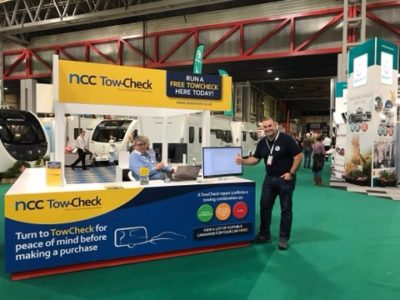
You can make sure your tow car and caravan towing combination is safe and legal by inputting the details into the TowCheck website.
3. Load your caravan correctly
Lee Davey’s top tip is to load your caravan correctly before you hitch up and tow so you are towing safely and your outfit is stable.
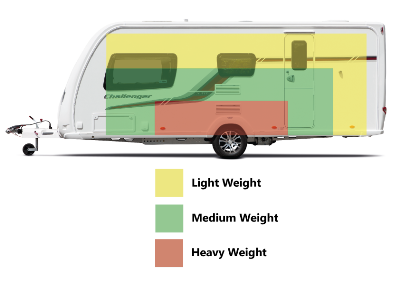
4. Fill up your tow car with fuel before hitching up
Filling up your tow car with fuel without the caravan on the back is a great tip from Karina.
“The last thing you want to do is set off towing and find out you’ve not got enough fuel to get to your destination,” said Karina. “Getting into a petrol station with a caravan on the back is not always that easy. So fill up before you hitch up!”
5. Attach the breakaway cable
Before hitching up your caravan you need to make sure the brake will come on if you make a mistake, so Tim advises to always attach the caravan breakaway cable first.
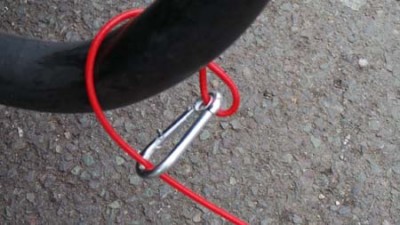
“Then go through the process of putting the caravan hitch on to the tow ball and lowering it down,” added Tim. “If you’ve got a hitch that shows it’s connected, a button will pop up and go green.”
Tim then suggests winding the jockey wheel up and if properly connected it will pull up the back of the car. If it doesn’t then the caravan is not connected properly.
6. Secure everything before towing
As well as making sure all skylights, windows, doors, lockers etc are firmly closed, Lee also reminded caravanners to make sure the travel lock on the fridge is securely fastened.
It might sound simple or silly, but Lee and his family found out the hard way after forgetting to do this after embarking on a three-week European holiday via the Eurotunnel.
“We found two litres of milk had fallen out of the fridge and was soaked up in the carpet – it’s not funny!” said Lee. “So, always make sure your fridge is locked before towing.”
7. Check your tyres
Jules reminded us of our PACT for caravan tyre and wheel safety, and that before towing you should always check the pressure, age, and condition of your caravan tyres, as well as the torque settings of the wheels.
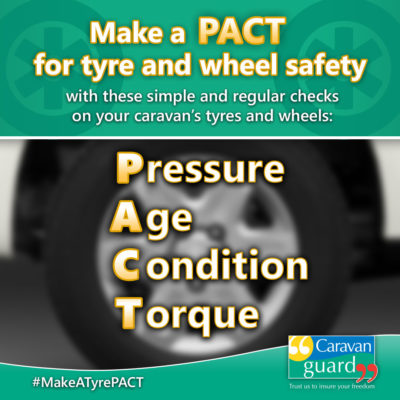
8. Always fit towing mirrors
To make sure you’re towing your caravan safely and legally you need to be able to see behind you.
“The law requires you to see behind 20 metres back and four metres out,” advised Tim.
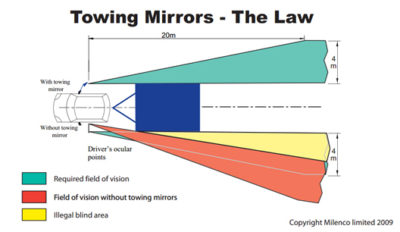
He also alerted caravanners who might have swapped to an eight-foot wide caravan that their old towing mirrors might no longer be legal and allow you to see around your caravan enough. However, some manufacturers sell an extension arm so you have a good view aroud your caravan.
“It’s really important that you can see where your caravan is, how it’s running down the road and what other people are doing behind you so you can respond,” added Tim.
9. Go slow
Karina’s last towing tip is to go slow and steady and swing wide!
10. Follow the traffic when towing abroad
If you’re heading to the continent and you’re nervous about towing on the opposite side of the road, Lee advises pulling over after coming off the ferry or Eurotunnel and let the traffic go past.
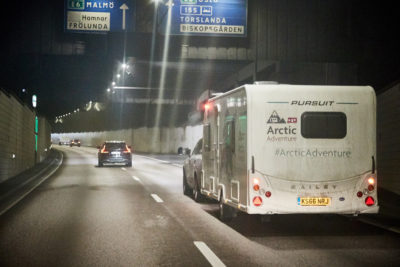
“Then follow this traffic, which then meanders through all the roundabouts and dual carriageways,” said Lee. “You’ll have quite a lot of it to follow and by the time you’ve bypassed all of that traffic you’ll be used to being on the other side of the road. So, if you’re thinking what’s it like to tow on the other side of the road, just follow other people for as long as you can.”
Over to you…
Got any top towing tips to share with fellow caravanners? Feel free to add them in the comments box below.
And don’t forget to check you have specialist caravan insurance cover to pride your pride and joy in case the worst should happen, whether you’re towing, on holiday or when your caravan is in storage. Simply click the “get a quote” button at the top of the page.


Breakaway cable, there was if I recall, some advise about attachment depending on the type of clip on the cable as its possible for some clips to straighten out under load these are the ones with a spring catch. The cable should go round the towbar and not in the hole provided. The other type of clip is a caribena style and is machined so the parts engage and interlock under load. These can be attached to the towbar eye, or hole.
Also on the subject of nose weight, some caravan manufacturers need a boot up the you know what’s. My last caravan had about everything heavy mounted forward of the wheels, so the nose weight was 100kg without any of my stuff loaded. My car was 80kg. So I used to dump a heavy awning in the back of the caravan to counterbalance. In your yellow zone. My local dealer claims this is a common problem.
Also towbar type bike racks are added to the nose weight if stopped by the police.
Thanks Trevor – the breakaway cable video is here: https://www.caravanguard.co.uk/news/video-caravan-breakaway-cables-15969/
Top 10 Towing a caravan Tips! Thanks for sharing this, I will share this to our company’s management for future use. Were trying a different market.
When I have hitched up, I remove the jockey wheel completely.
Three reasons.
1) Many campsite have unduly high speed restriction ramps, meaning that in some instances damage can be inadvertently caused to the wheel if not taken very slowly.
2) Removal whilst towing to your destination, decreases the risk of the van being stolen, whilst on a rest break at a Service station, etc..
3) Boarding ferries to the continent. The angle between the shore ramp and the ships loading ramp is often a sharp angle between them. This means the angle between tow car and caravan is increased significantly. Resulting in an alarming noise and subsequent damage to the jockey wheel.
Have experienced this on two occasions in the past.
Yes I am aware that the size of the tow car and it’s wheel size can have a impact on the above, my experience with 1 & 3 occurring with medium sized saloon and estate cars.
Item 2 is my personal feelings towards security.
Liz
many thanks for helpful advice
Colin
Thanks you helpful advise as I’m a beginner. What is general preferred tow ball type (flange ball or swan neck). Also, with modern cars having parking sensors, are detachable tow bars as good as fixed type?
Hi Colin, you would be best speaking to a tow bar manufacturer like Witter – https://www.witter-towbars.co.uk/towbars. They have a knowledge hub where you can ask questions or simply give them a call. Any tow bar that meets the relevant Type Approval would be acceptable. Happy caravanning.
Hi
In relation to the breakaway cable, this should be looped around something to apply the caravan brakes.
If the worst should happen and your caravan becomes un-hitched from the tow vehicle the carabiner is not strong enough to hold the van to apply the brakes, the weight of the caravan will simply straighten the carabiner and the brakes will not be applied.
Thanks Gary, we have a video all about breakaway cables: https://youtu.be/e2IcPIihreI
Item 5; Tim says “winding the jockey wheel up” I think he means ‘down’ to force the drawbar up.
Item 5 also shows the breakaway cable looped round the ball hitch. Wrong. If the ball hitch breaks the breakaway will pull off and not work. Always attach the breakaway cable to the purpose made hole in the tow bar itself. All approved tow bars have this hole and the Construction and Use Regulations make it a legal requirement to attach this way.
Hi Peter, when talking about winding the jockey wheel, Tim is referring to winding the jockey wheel, causing it to raise the chassis of the caravan upwards. This is to test the connection between the tow car and trailer. This is an anti-clockwise motion. Winding the wheel clockwise (downwards) lifts the inner shaft of the assembly causing the chassis to move downwards.
With regard to the comment on the breakaway cable: If there is no facility to fix the carabiner type fixing to a designated mounting point on the towbar assembly then the cable may – if possible and practicable – be fed through the towbar assembly to secure separate from the actual tow ball back onto the cable. If neither option is available then as a last resort the cable has to be looped around the actual towball – so this action is not wrong it is the only option left available.
Terrible sound quality with background noise if it’s interview sound needs to be clear camera mic not good enough.
Sorry about the sound on Tim’s interview Bob. You’re right we didn’t have an external mic. Hopefully the subtitles helped instead.
What about training?